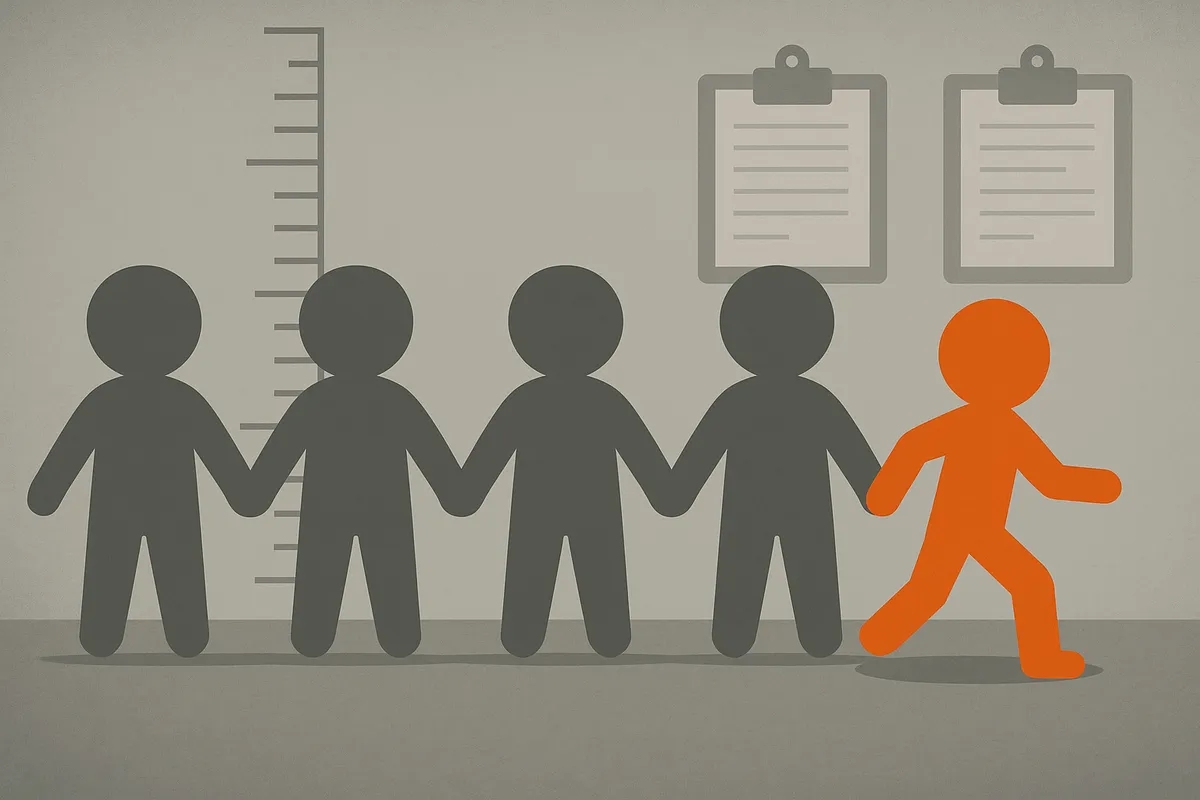When “Early” Means Erasing Us

The Cureus Journal of Medical Science review article "Early Diagnosis and Intervention for Autism Spectrum Disorder" by Paula Vanegas Navarro, Fiorella Apuy Rodríguez, María Jesús Arias Alvarado and Melissa Chacón Quirós, published August 7, 2025, reads like a glossy pitch deck for the diagnostic-industrial complex. It’s dressed as public health urgency, but before we buy “better outcomes,” we have to ask the question this review dodges: good for whom?
Here, “good” means catching autistic kids younger, labeling them faster and drilling them harder — all before they can refuse. It means quicker compliance with neurotypical norms, quicker relief for professionals who measure success by proximity to “average range” and quicker reassurance for policymakers chasing cost savings. Whether that’s good for the child? Never asked. The review’s “0.5–1% worldwide” prevalence is fine as a global stat but low for the U.S. (~3% in CDC monitoring sites, about 1 in 31 8-year-olds). Rates swing even inside the U.S. — 3% is an average, not a ceiling.
Pathology as Default
From the first paragraph, autism is cast as “impairment” and “pathology,” a checklist of missing behaviors, like the prevailing attitude in countries where autism is officially a discapacidad, an incapacity. Differences like “less stranger anxiety” or “absence of pointing” aren’t explored as cultural or developmental variation — they’re medicalized. Higher-IQ autistic kids “mask deficits” instead of navigating hostile norms. Prognosis hinges on hitting neurotypical milestones in IQ, adaptive skills and language. Survival equals assimilation.
Behavioral Compliance as Treatment
The authors crown early intensive behavioral interventions and applied behavior analysis as “widely studied therapies,” ignoring that success is defined as behavioral conformity and that long-term quality-of-life data are thin and mixed. Skill gains show up in the literature; so do autistic self-reports of harm — but those vanish here. The only parent metric is “stress,” framed by how it affects child performance, not as a sign the therapy itself might be harmful. “Good” here means learning to pass as neurotypical.
Public Health Framing Without Consent
The review calls rising autism prevalence a “public health concern” but doesn’t say whether that means meeting unmet needs or reducing the number of autistic people. That difference matters.
The Split They Don’t Name
The AAP says screen every child at 18 and 24 months. The USPSTF says evidence is insufficient when there are no concerns. In no-concern, low-prevalence groups, screening often produces false positives — exactly why the USPSTF is cautious, even as the AAP says the tradeoff is worth it. For families, that’s the difference between informed choice and assembly-line labeling.
Biomedical Escalation Without Ethics
The review name-drops MRI, EEG, gaze tracking and genetics to “standardize” early diagnosis. None are validated or guideline-endorsed for routine infant use. The science isn’t there — but if it ever is, those same metrics could slam doors as easily as they open them. These aren’t current policies, but the harms are foreseeable: coercion, selective abortion, insurance gatekeeping. Whose “good” is that? Not the child with no say in where that path leads.
Pharmaceutical Reinforcement
Pairing therapy with risperidone (ages 5–17) or aripiprazole (ages 6–17) is billed as a fix for “irritability” and “restrictive behaviors.” Both are FDA-approved only for irritability in autistic disorder — aggression, self-injury, tantrums, mood swings — not core traits or “tolerating” therapy, and only after other strategies fail. Use them to blunt distress from coercive settings, and you’re not treating — you’re enforcing. That’s chemical compliance.
The Real Delay
The review’s big villain is the lag between diagnosis and intervention. The real delay? Admitting that earlier isn’t better when the goal is to erase us sooner. Standardizing that erasure through pediatric protocols, backed by the Cureus Journal of Medical Science and the clinicians who cite it, doesn’t protect autistic life. It trims it down until it passes for someone else’s “acceptable” — and calls that good.